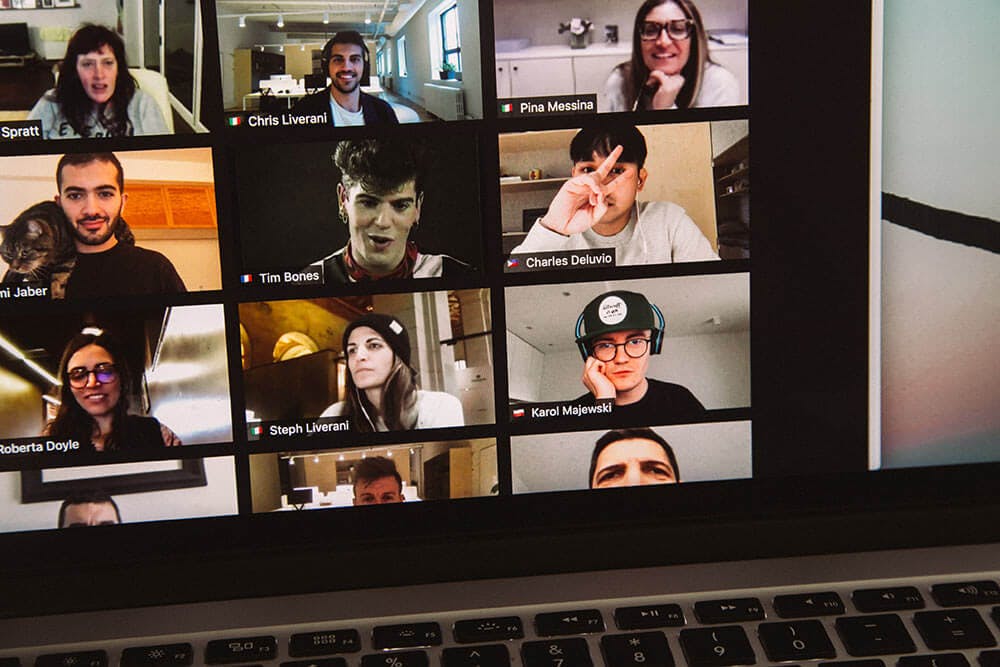Virtual Events to Run in 2022 and Beyond

Though we entered spring with the highest hopes we’ve had yet in terms of our pandemic positioning, we know that virtual engagement will play a role for the foreseeable future, and perhaps furthermore.
As such, we have a few recommendations for virtual event ideas to help you continue to attract and engage prospective students from a distance.
The aim of these virtual events is to connect with your students and create a sense of belonging – providing them reassurance and guidance on their higher education journey. When it comes to digital student-to-student engagement, taking events online is the best way to jumpstart those initial connections.
“Removing the face-to-face might make some feel as if you’re removing the personalization of each event when, in actuality, you’re opening up a higher level of communicating,” said Corinne Gentile, Director of Enrollment Management Events at St. John’s University. And their 49% of deposited students who attended at least one event during the Fall 2020 or Spring 2021 semesters is strong evidence of this.
Top 4 virtual event ideas
The key to running sensational virtual events is in recognizing their value and utilizing it to meet your institution’s needs. They’re an opportunity to deliver a unique experience, totally separate from your offline events, and they should be handled as such.
The greatest draw is that they’re completely accessible. Unlike a traditional event that attracts anyone from within travel distance, a virtual event can bring in students from across the world – including countries you may never have recruited from before.
Western University hosted their Virtual Fall Preview Day on Unibuddy Live with a showing akin to one of their in-person events and more students from beyond a two-hour driving radius than ever before. The event was also followed by more applications in the start of the new year than the year prior with an increase in first-choice selections.
Going digital also gives universities the ability to curate a personalized experience. Large-scale visit days are a full solution, no doubt. But students may feel bombarded by information that doesn’t apply to them on an individual level.
With that in mind, here are some virtual event ideas you can run to start taking peer-to-peer online, and how you can run them.
1. Q&As
Q&As for specific schools or majors are a great opportunity to get your future students online with a department head or faculty member for an informal chat about what to expect when they start.
These events take around half an hour to set up and can run for anything from 45 minutes to a couple of hours. It could be a good idea to invite a professor to livestream and answer student questions in real-time to add that personal touch.
As with all events, having current student ambassadors in the chat will only add value to the experience. Not only can they answer inquiries with real experiences, but they can also maintain the flow of the chat or help build student confidence if it’s a bit quiet at first.
2. Drop-in sessions
Drop-in sessions are a great way to create an informal event that your students will really benefit from. You can set one up in less than 10 minutes, and easily duplicate it so you can run it weekly or monthly.
Almost like a virtual office hour, you can run these drop-in sessions on anything from accommodation, to course of study, to health on campus. Students can, as the name suggests, pop in to ask their questions and receive answers, and it can be easily managed by even just one staff member.
3. Group chats
Your students are going to set up group chats on Facebook – they want to find their future classmates, get reassurance from others in the same situation as them, and get ahead of the curve on making friends.
These groups are inevitable, but by adding an official channel you can make sure they are meeting their cohort, their teaching staff, and current students safely, and ensure the exchange of accurate information too. This way nobody will end up buying a $200 textbook they didn’t really need.
The advantage of Unibuddy Live is that you can organize events that run for weeks and months. That means you can start a Live event and keep it running until the semester starts for students to enter, leave and re-enter at their convenience.
4. Virtual campus tours
There are lots of virtual campus tour solutions out there, from 360 tours to interactive videos. Unibuddy Live is not that. But it does focus the attention on what the real benefit of a campus tour is: the chance to speak to a current student.
Get a student set-up in their student accommodation with Unibuddy Live video streaming, and they can share their experience of that particular dorm or living space. Then, you can easily cut to another student streaming from the library.
All you need to stream live video is a laptop and an internet connection, so if students can move around, there’s no reason a more traditional campus tour wouldn’t be possible. Wabash University looked into virtual tour companies, but none seemed to compare to the Unibuddy Live platform because it allowed the interaction to take place right on their website.
Ultimately, the most important aspect is the fact that it’s live. You can have other students in the chat answering questions in real-time, or engaging students further in the virtual tour.


